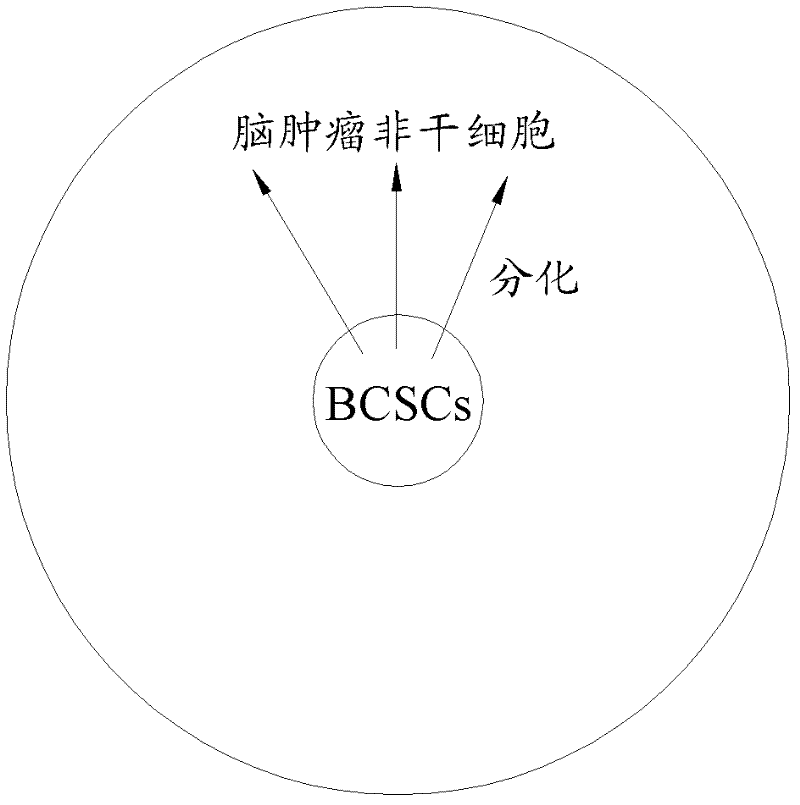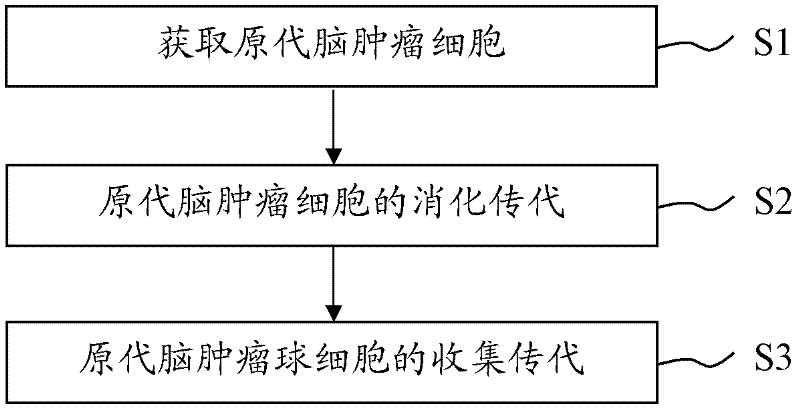Brain tumor stem cell separation method
A separation method and technology for brain tumors, applied in the direction of tumor/cancer cells, animal cells, vertebrate cells, etc., can solve the problems that affect the cultivation research, lengthy time, cumbersome process, etc.
- Summary
- Abstract
- Description
- Claims
- Application Information
AI Technical Summary
Problems solved by technology
Method used
Image
Examples
Embodiment 1
[0058] The method for separating brain tumor stem cells, that is, using "MG-132 + docetaxel + adriamycin + ESGRO experimental model" includes the following steps:
[0059] S11. Preparation of reagents and solutions:
[0060] (1) Reagents:
[0061] Reagents needed for cell culture: DPBS, trypsin (Gibco), collagenase, fetal bovine serum (FBS), DMEM medium, DMEM / F12 medium, RPMI-1640 medium, B-27 additives (without serum and vitamins) A), insulin (insulin), human recombinant epidermal growth factor (hrEGF, Sigma company), human recombinant basic fibroblast growth factor (human recombinant basic fibroblast growth factor, hrbFGF, Sigma company), ESGRO (Chemicon), MG-132 (EMD Millipore, Cat. No 474790), docetaxel, adriamycin, antibiotic P / S / G (penicillin / streptomycin / gentamicin).
[0062] Solution preparation: MG-132 is dissolved in dimethyl sulfoxide (DMSO), prepared as a 80μmol / L solution for later use, stored in the dark at -20℃, diluted to the final concentration before use; docetaxel ...
PUM
| Property | Measurement | Unit |
|---|---|---|
| purity | aaaaa | aaaaa |
| purity | aaaaa | aaaaa |
Abstract
Description
Claims
Application Information
 Login to View More
Login to View More - R&D
- Intellectual Property
- Life Sciences
- Materials
- Tech Scout
- Unparalleled Data Quality
- Higher Quality Content
- 60% Fewer Hallucinations
Browse by: Latest US Patents, China's latest patents, Technical Efficacy Thesaurus, Application Domain, Technology Topic, Popular Technical Reports.
© 2025 PatSnap. All rights reserved.Legal|Privacy policy|Modern Slavery Act Transparency Statement|Sitemap|About US| Contact US: help@patsnap.com



